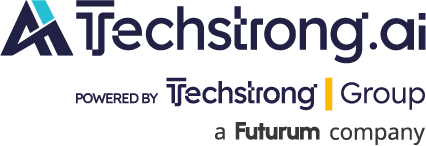
Enterprise AI adoption is accelerating, with organizations increasingly shifting toward autonomous decision-making and planning to expand their AI capabilities over the next three years.
The next big evolution for AI systems is agentic AI, which allows AI agents to act autonomously, solve problems and make ad-hoc decisions based on complex reasoning. These agents have the potential to reshape how humans participate in automated processes – freeing them up from routine, mundane tasks to focus on more strategic initiatives. With more day-to-day decisions expected to be made autonomously, businesses are set to undergo a major shift in how they operate.
Yet, scaling and operationalizing any type of AI isn’t easy. Despite widespread investment, only 1% of companies consider themselves AI-mature, meaning they’ve fully integrated AI into workflows and are seeing substantial business outcomes. Ensuring regulatory compliance and integrating AI seamlessly within existing business processes also remains a significant challenge.
As AI forces a rethink of traditional operating models, organizations must future-proof their enterprise architecture to remain agile and competitive. This is where process orchestration and automation (PO&A) becomes vital. It provides the foundation needed to embed AI tools and agents into automation strategies securely, efficiently, and at scale.
Why Agentic Process Orchestration is Key to Scaling AI
PO&A is essential to operationalize AI effectively, reduce complexity, and unlock lasting business value. This approach allows organizations to connect automation efforts across people, systems, and devices. Without orchestration, task automation becomes fragmented and AI tools become siloed, leading to inefficient processes that hinder internal operations and degrade the customer experience.
Process automation, especially when it involves AI, often requires human-in-the-loop oversight to validate outputs or manage exceptions. Agentic orchestration ensures that both the manual and automated steps within an end-to-end process are running smoothly, which is increasingly important as AI technologies begin to operate more autonomously.
Beyond coordination, this approach helps organizations tackle some of the most common barriers to AI adoption, including dealing with legacy technologies, mitigating compliance risks, and controlling costs.
Overcoming Common Challenges in AI Adoption
1. Reinventing Business Processes with AI
Some organizations aim to integrate AI into existing processes, while others want to reinvent business processes entirely. In both cases, automation silos are a real risk. Many software systems come with embedded AI agents and other types of AI, such as dedicated SaaS products and RPA, complicating matters further. When these siloed components can’t interact with end-to-end processes, inefficiencies and fragmentation emerge. To avoid this, organizations should look to adopt agentic orchestration platforms with a flexible architecture to ensure new technologies seamlessly integrate into existing automation strategies.
2. Managing Legacy Tech
Inflexible legacy systems, outdated processes, and slow adaptability can also hinder AI adoption. To increase the efficacy of automation efforts, many organizations are orchestrating older technologies and human processes alongside newer AI technologies. Using agentic orchestration, it is possible to design processes that incorporate both legacy systems and AI. For organizations aiming to phase out outdated technology, a modular process architecture facilitates the gradual migration of tasks to modern platforms.
3. Mitigating Risks and Ensuring Compliance
The lack of transparency about how AI is used within business processes can create regulatory compliance issues. To mitigate such risks, organizations must remain accountable, be able to explain AI-driven decisions, and in some cases, maintain tight guardrails. By providing visibility into end-to-end processes, agentic orchestration provides an audit trail to help organizations remain in compliance with industry-specific regulations, data privacy laws, and emerging AI laws. Depending on the level of regulation, organizations can scale the level of non-deterministic or agentic process orchestration up or down, ensuring the right level of control over automation strategies.
For example, intelligent automation specialist, BP3 has integrated agentic AI into decision-heavy workflows for regulated industries, like BFSI, pharma, healthcare, and utilities. Its approach uses LLMs alongside DMN (Decision Model and Notation) tables to generate “accept, reject, or refer” outcomes. In ambiguous cases, decisions are escalated to a human, enabling the AI to learn from real-world feedback over time.
4. Controlling Costs
Some AI technologies are more expensive to run than others. It’s been reported that OpenAI could offer AI agent services that could cost between $2,000 and $20,000 a month. Without tight monitoring and governance, expenses can escalate quickly.
It’s also important to establish what the best use cases are for certain technologies. In some scenarios, using deterministic process orchestration to drive straightforward and repeatable processes may be more effective than relying on non-deterministic, agentic orchestration. Deterministic processes are typically less costly and minimize the risk of flawed execution, such as accidentally triggering the wrong steps. In short, just because AI can run a process doesn’t always mean it should.
Agentic orchestration remains valuable where full visibility into end-to-end processes is required, allowing organizations to uncover insights that streamline operations and optimize resources. By carefully assessing which processes truly benefit from AI, organizations can reduce costs while maintaining execution quality.
By applying a unified PO&A framework, organizations can accelerate AI adoption in complex business processes while maintaining regulatory compliance.
For instance, Halkbank Turkiye has used PO&A to effectively integrate AI into its high-volume money transfer processes. Customers now submit orders in free format (e.g. scanned letters), which are processed using OCR (Optical Character Recognition) and an on-prem AI model to extract transaction data. This data is reviewed by human staff before execution. Camunda orchestrates the entire workflow, dynamically invoking AI within guardrails. As a result, total processing time for a money transfer order dropped from 54 to 9 seconds, errors were halved, and 63% of transactions are now completed without manual correction.
Now Approaching: The Autonomous Organization
While AI can help organizations realize automation goals on faster timelines and with fewer resources, it can also create silos and technical debt if implemented poorly. Process orchestration and automation help ensure that new AI technologies are seamlessly integrated into existing processes and operate within controlled, transparent, and compliant environments. It’s what turns AI from a promising capability into a source of measurable, scalable business impact.

